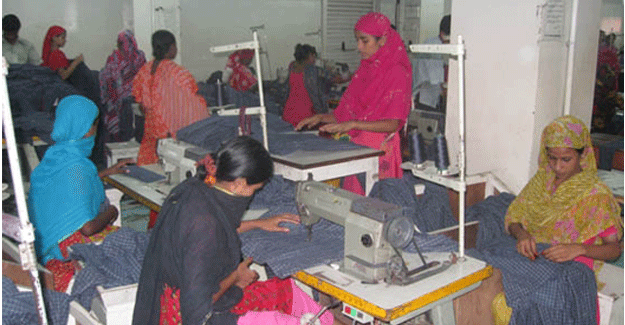
Automation Key Reason For Bangladesh Garment workforce Dip
A sea of factors came into play over the past five years in which the employment generated by the Bangladesh garment sector has significantly reduced by approximately 8 lakh workers, with the main factor in play being the rapid automation of production.
Automation of production compounded with closure of factories that were found noncompliant with safety and other regulations besides the rise of some high potential sectors led to this steep decline in employment in the garment sector a government report states.
The report that was founded on the basis of research conducted by the Bangladesh Institute of Labour studies, pointed out that way back in 2013, some 44 lakh workers were there in the garment sector whereas currently there are only 38 lakh workers in this sector. The report further said the main culprit however, was automation of production. The study cited that the inclusion of one machine was well able to render a minimum of 10 workers jobless.
According to the study, the trend was more pronounced in the woolens sector with sweater manufacturers increasingly opting for complete automation to cut down cost of production. This substantially reduced their dependence on workers.
Findings of the global body, International Labor Organization (ILO) indicated that the replacement of workers by machines or automation process had by and large succeeded in displacing unskilled and semi-skilled workers. So far, the factories have not retrenched their skilled work-force.
As stated earlier, automation has been compounded by the shutting down of approximately 400 factories which ranged from small to medium capacity production. These factories failed to find eligibility under the criteria for safety and labor policies that were set as a benchmark by the foreign observers’ Accord and Alliance.
The Centre for Policy Dialogue disclosed that the shift towards automation in factories has been substantially high in the knitwear sector. Besides this, the other factor that influenced this shedding of workers is the immobility of labor problem. Several factories shifted from Dhaka to Gazipur, Ashulia, Savar and Manoa subsequent to the Rana Plaza disaster. The workers expressed their inability to shift base and entered into the workforce of other sectors.
The drive for automation was also influenced by the commencement of manufacture of value-added garments like suits, blazers, lingerie and sportswear, disclosed industry sources, citing that when one is manufacturing high-end garments, they need to achieve a level of sophistication that cannot be contributed by manual labor.
The value-added garment segment has witnessed a 10 percent increase in production over the past five years and has shot up from 30 percent to 40 percent, industry sources added.
Textile Excellence
If you wish to Subscribe to Textile Excellence Print Edition, kindly fill in the below form and we shall get back to you with details.








